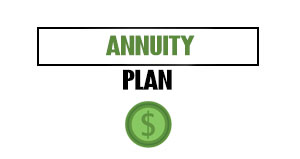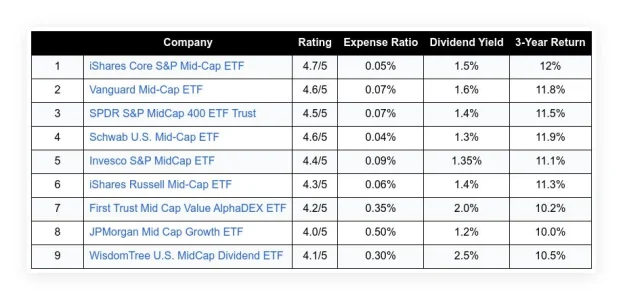Not many people get to go on a sabbatical during their careers, but if your company has a policy allowing this kind of structured break, you should take it. A career sabbatical offers professionals a set period of time to pursue personal goals, recharge, or even develop new skills. But if you haven’t done some financial planning beforehand, going on that big break may produce more stress than anything else.
Table of Contents
ToggleOnly Take a Sabbatical if You’re Prepared Financially
It takes solid financial preparation to turn your sabbatical into something that doesn’t feel like a risky leap. You want to turn it into a step forward that ensures your future and frees you up to enjoy yourself.
Set Length of the Sabbatical and Savings Goals
Start planning out the sabbatical long before your last day at work. Do you know how long you want it to last? Some people go three to six months or even as long as a year. Once you know how long you’ll be away, you know how much you must save. A good rule of thumb is multiplying your monthly expenses by the number of months away and adding 20% as a buffer for unexpected costs.
Your sabbatical expenses will go beyond regular living expenses, so account for travel, any courses you might take, or a side project you decide to take on. Each activity carries its own price tag.
Build Your Financial Safety Net
If you’ve ever created an emergency fund for yourself, you may know that a typical fund covers 3-6 months of expenses. For a sabbatical, you need even more protection than that. Think about dividing your funds into three categories:
- Daily cost of living during your time away
- Emergency savings (for genuine emergencies only)
- Expenses for when you return to work
Keep these funds in different high-yield savings accounts. The mental separation helps maintain financial boundaries when temptation strikes.
Pay Off Debt and Know Your Tax Strategy
If you’re in debt, taking an extended period of time off may be a no-go. Take stock of your debt, whether it be mortgage, student loans, credit cards, or personal loans. Any debt with high interest, like a credit card, probably requires an aggressive payoff before you leave.
As for taxes, your situation could change during an extended break because you might drop to a lower tax bracket without a steady income. This creates opportunities for strategic financial moves like Roth IRA conversions or realizing capital gains. Some sabbatical expenses might qualify for tax breaks related to education or professional development. Talk to a tax professional to find potential savings.
Income Strategies During Sabbaticals
Savings make a sabbatical possible, but if you start earning more money regularly, you’ll reduce stress and extend your time away.
1. Start Making Passive Income
Passive income happens when people create systems that generate money without much ongoing work. A classic example is renting out your primary residence while traveling or investing in rental units. Other examples include digital products like online courses, e-books, or stock photography, which keep bringing in money once you’ve created them. People with large followings on social media or an established blog often try affiliate marketing and make commissions when their audience buys the recommended products. Since these projects require much upfront work, establish them before your sabbatical begins.
2. Remote Work Options
A sabbatical doesn’t have to mean a full break from your current job. Maybe you just need a flexible work arrangement that helps you maintain income but get more freedom than you currently have. Try these ideas:
- Reduced hours in the actual office at your current job
- A switch to contracts based on projects with clear boundaries
- Virtual assistant roles that offer flexible scheduling
- Tutor people or teach them online
Upwork, Fiverr, and other platforms help connect people to remote work opportunities worldwide. Look for seasonal positions in customer service, writing, or administrative tasks.
At a higher level, you may want to leverage your professional knowledge for a consulting gig that pays a higher rate. Research professional speaking or guest lecturing possibilities often require minimal preparation time compared to their financial return.
3. Investment Income Tactics
Put money into investments that generate dividends you can use on a sabbatical, such as stocks, bonds, and real estate investment trusts (REITs). Don’t just hope your money grows in value; choose holdings that send you checks you can actually spend during your time off.
Be smart about where you keep these revenue sources. Put them in tax-friendly accounts like IRAs or 401(k)s. You’ll keep more money than send it to the IRS.
Expense Management During Your Absence
If you can stretch your money as far as you can, you can stay on your sabbatical longer without dipping into your savings.
Strategies to Lower Housing Costs
Housing is typically the biggest cost you’ll incur during your time away but it’s also the best chance you get to save money. Try renting out your place back home to offset costs, cover your mortgage, or generate extra cash. Try a home exchange network that connects you with someone who wants to stay in your area. Also look for house sitting opportunities that offer free accommodations in exchange for property maintenance or pet care.
Health Coverage Solutions
The last thing you need is an insurance gap that leaves you uncovered while away. For people who are leaving their jobs, COBRA may let you keep an employer plan, but you could have to pay the full premium without company contributions. Look into marketplace health insurance or short-term health plans that may be more affordable, but know that they may offer more limited coverage. Also, explore specialized travel medical insurance that handles emergencies abroad.
Smart Travel Budget Tactics
Travel costs can vary wildly, so many people try different strategies, such as slow travel, where you stay in locations for weeks or months rather than days. This may make big rental discounts possible as well as lower transportation costs.
Some of the most budget-friendly global destinations include Southeast Asia, parts of Latin America, and Eastern Europe. If you’re flexible on when you’d like to travel, research rail passes and flight deals. Take any trips between peak tourist seasons and off-seasons, which still give you decent weather conditions.
Daily Expense Discipline
Small daily expenses add up way too quickly over time.
- Cook rather than eat out
- Use a local SIM car instead of an international phone plan
- Use the local library for free entertainment
- Take public transportation instead of car rentals or taxis
Track every expense using an app or spreadsheet to reduce spending and spot budget leaks before they become problems.
How to Protect Your Financial Future During the Break
As you optimize your short-term financial situation to make a sabbatical work, don’t lose sight of the longer-term financial health you should cultivate. Try these strategies:
1. Actively Manage Your Retirement Account
When you pause contributions to your retirement account, compound interest will impact future growth. Before you leave your job, check the vesting schedule for your 401(k) account to avoid losing employer matches. You may even want to contribute more ahead of time to offset the coming pause. If you’re self-employed, you can contribute to a SEP IRA or Solo 401(k) from any freelance income you earn during the break.
2. Adjust the Portfolio When Needed
With a break coming up, it’s smart to change your investment strategy by increasing your cash positions so you have money accessible if needed. If there’s an option to rebalance the portfolio, make sure you do it periodically and automatically. Also, review any automatic investments that might drain the funds you’re using for the sabbatical. When you stop investing new funds, it interrupts compound growth, so don’t stop making minimum contributions.
3. Protect Your Credit Score
You may want to set up auto payments for your credit cards and loans before you leave, but still keep one card active with small charges to keep your credit history active. If you’re going on a more extended trip, check your reports halfway through and leave cards you don’t want to use at home to stop yourself from impulse spending.
4. Leave Money For Your Return
Put funds aside to dedicate to the transition back to work after your time off. This can cover interview costs, renewal of any certificates you need, or daily expenses during your job search. Set aside at least three months of regular expenses specifically for this return.
Limit the Impact on Career and Earnings
Sabbaticals require thoughtful consideration because of how they can interrupt your career trajectory. Try the following:
Frame it Right
People don’t look at employment gaps as negatively as once, but you must frame them strategically. For example, position your sabbatical as deliberate professional development rather than just time off. Document the different relevant experiences and skills you acquired during your break.
Keep Your Skills Sharp
Professional skills erode without practice. Schedule regular maintenance sessions throughout your sabbatical to keep your technical abilities sharp. This might include:
- Monthly coding challenges if you’re a developer
- Writing assignments if you work in communications
- Industry trend analysis if you’re in business strategy
- Freelance projects in the area you concentrate in
The most successful sabbaticals balance rejuvenation with skill building aligned with career goals.
Maintain a Strong Network
Check-in with your key professional contacts every quarter or so. Share meaningful insights from your break rather than generic updates. Concentrate on the people who may be able to provide you with future opportunities. Strategize with them about how best to negotiate your return to the job. Be open to accepting a lower salary in exchange for lifestyle benefits that preserve new priorities you discovered on the sabbatical.
Plan Your Reentry to Work
The transition back to working life needs as much financial planning as the actual sabbatical, although people tend to give it less attention.
Create a Recovery Timeline
Plan a realistic path to your original financial state and list milestones for each month. Many people need 6-18 months to get back to where they were financially before taking time off. Don’t make any significant purchases or lifestyle upgrades during that time.
Rebuild Your Emergency Fund
Make the rebuilding of your emergency fund your priority. Start with at least $1,000-2,000 for emergencies, then build back to a full 3-6 month reserve. Automatically contribute money from your first paycheck to help establish the fund.
Stay Frugal
Once you start receiving regular paychecks again, you may be tempted to increase your spending. Don’t do it. Instead, maintain the level of spending you had during your break for at least three months after returning to work. Staying frugal a little bit longer will help you recover faster financially.
Retirement Acceleration
Once you’ve got sufficient funds in your emergency fund, turn your attention to your retirement contributions to compensate for the time you spent away. Take advantage of employee matches and explore strategies to catch up using your IRA or other investment vehicles.
Better Than Ever
To do sabbatical work, you have to stay disciplined, but you’ll reap the rewards from the effort you made. If you spend time off, you may gain clarity that will help you adjust your financial priorities for decades ahead. A sabbatical isn’t just a financial stress test; it also enables you to redesign how you want your life to look. If you give your best effort to the planning and execution of your break from work, you may return confident and transformed with your financial foundation not just intact but better than ever.
















